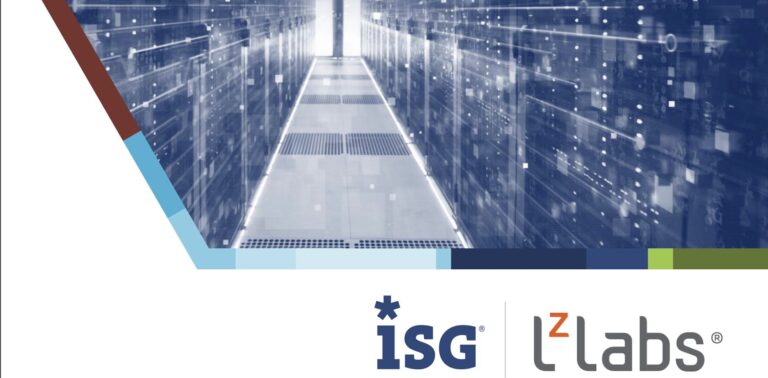This fundamental principle is just as valid for mainframe application modernisation as for anything else. Because there is no silver bullet: there is no single product, technology, architecture, or AI algorithm that will solve the complexity that comes with modernising business-critical applications written decades ago.
A key reason is that application modernisation is not only about technology. It’s about quantifying systemic risk and making provisions to deal with it. It’s about innovation investment not as a percentage of revenue but as a natural hedge against risk. It’s about understanding what gets people fired up ready for change. It’s about expert individuals with vision and skill to define the path to successful change, combined with humility and vulnerability that facilitate a collective effort to reach new heights.
These were some of the topics discussed at the recent LzLabs thought leadership event at the Tate Modern in London. Futurologist and architect Indy Johar, and rugby legend Jonny Wilkinson, joined LzLabs CEO Thilo Rockman, VP of People and Organisation Kristine Duyck, and senior advisor Frank Mang.
Solutions, not products
Another reason why magic bullets don’t work (and don’t exist) is because the key driver for modernisation is to preserve what needs to be preserved in core legacy applications, Thilo said. Companies don’t need to start from scratch: they should change only what must be changed.
This is not new, of course. Companies often overlook the fact that modernisation is a continual process of incremental change.
“Legacy transformation is not over when the mainframe is gone. All applications developed today will be legacy tomorrow,” said Frank. “What routes are available to modernise legacy technology? Several are well known: replace, rehost, rewrite, refactor. It depends on business requirements that change over time.”
Faced with so many options, organisations often struggle to choose the optimum path. That’s why clients don’t buy products but look for solutions—solutions that combine expertise on mainframe, languages, applications, cloud, open-source, and project delivery, to name only a few.
“Nowadays everybody thinks that it’s easy to migrate to the cloud, and if I move it to the cloud then everything’s fine and dandy,” said Thilo. “Not really. There’s quite a bit of risk. There’s so much embedded business logic in these legacy assets. You should leverage all of this value as it is part of the fabric of your business and often a key to your competitive differentiation and market leadership.”
Take back control—and hedge against risk
If an organisation is to leverage and modernise its legacy assets, it first must take back control over them. This should not be taken for granted; otherwise, organisations will end up watching an opportunity for innovation become a big risk.
Indy Johar posed a provocative question: “Are we holding the risks, are we recognising the risks, are we putting them on our balance sheets and are we adequately investing in the management of those risks?”
“That’s where the mainframe conversation really comes in,” he added. “Because if you look at legacy impacts, you’re holding a lot of risk, there is a real human capital risk (…) I think this applies to not just your technology component; it applies also to your wider sense of how you’re running organisations in a complex, changing world with great amounts of risk in every component of your system.”
Indy suggested that there is a lack of in-depth dialogue between business leadership and regulators about the inadequacy of traditional risk registers. It’s no longer effective to have a risk register with red, green, orange, and yellow indicators. COVID is good example and by no means a surprise. Every country recognised a pandemic as a strategic risk. “What we didn’t have was the provisions and mechanisms in place to deal with it,” said Indy.
Organisations ought to build the capabilities to innovate against complex systemic risk, by aligning their innovation portfolio with those risks, he advised.
It’s a people thing
Nonetheless, all too often the easiest choice in legacy modernisation to do nothing. That’s akin to keep on kicking the can down the road. Organisations that decide to take matters into their own hands and succeed know that it comes down to people.
“Even as a technology company, your real asset is your human capital,” Kristine said to the audience. “Almost every issue that you encounter can be boiled down to how your people deal with it. What you need to tackle is how people deal with change.”
Unless organisations help their staff navigate the highs and lows of a major change process, they will be effectively building up risk within their own ranks and project delivery will suffer. Technical skills are of paramount importance. But are not sufficient to drive a major transformation. Kristine highlighted that people need to feel involved, to be heard. They should feel they’ve been given the proper training because it encourages people to learn new things. “It’s only then, when (learning) goes both ways, that you actually seize and grasp the benefits of change,” concluded Kristine.
The illusion of control
Human and organisational resistance to change and an establishment mantra that “things have always been done this way” create limiting beliefs and real barriers to innovation and transformation. There are real barriers to change as the outcome of change is fraught with uncertainty, personal and professional risk.
Jonny Wilkinson underscored that a humble mindset is at the core of high performance. “If things go my way, that’s brilliant. What if they go the way I don’t want? Even better. Why? Because I’m going to find out more of what I’ve got, how far I can go to reach my full potential.”
There’s an illusion of control when things always go right, added Jonny. Risk is removed from the equation, and personal growth vanishes. Not having control over things is what makes formidable outcomes possible.
“When it comes to the kick-off time, everyone looks at each other and just says, ‘You know what? We don’t know the outcome, do we? No. What are you going to do? I’m going all in. Will you come with me? Yeah, I’ll go all in as well.’ You feel vulnerable. And kind of alive as well.”
The universe was like a personal enemy, Jonny said and added that by “understanding the challenges it brings, I get it on my side. And that, for me, has been the secret to a team spirit and to a life that’s way bigger than just getting exactly what you want.”
Thilo would agree. In his view, transformation is not defined by a single event. It’s a continuum, it can be a difficult journey, but with the right vision, leadership, culture and expert support, it is something that individuals should welcome and organisations should embrace.
People always think in terms of the risk of “doing.” However, with legacy transformation, the risk of inaction can be even greater.
“The time is now, and we stand ready to support you in this critical journey,” said Thilo.
We know that it is difficult to grasp the full nature of a legacy modernisation effort. But you are not alone. Contact us for a free consultation.




